Zagreb in Croatia is a cosy and interesting capital city. Here you can experience everything from grand buildings and green parks to markets and coffee shops on the relaxed Tkalcic promenade. We have visited Zagreb in Croatia twice and have fallen in love with the Croatian capital. Here are some of the sights and 12 things to do.
Table of contents
Zagreb in Croatia
Zagreb is located in the north-western part of Croatia, between Mount Medvednica and the River Sava. In fact, no more than 4.5 million people live in Croatia. The capital also has several large green parks, making this a pleasant and manageable capital to stroll around.

Kaptol and Gradec - two villages that didn't get along.
Zagreb originally consisted of two small villages - Kaptol and Gradec - located on separate hills. Kaptol was home to the most ecclesiastical part of the population and Gradec was home to the 'common people'.
The two neighbourhoods found it very difficult to get along. and serious conflicts were not uncommon. Today, the city walls have been opened up and the city has merged and spread out around the two hills.
The city is divided into an upper neighbourhood (Gornji grad), also known as the Old Town, and a lower neighbourhood (Donji grad). After World War II, a new neighbourhood called Novi Zagreb was also built, located south of the Sava River.

Sights and things to do in Zagreb in Croatia
Zagreb is a city full of parks, relaxed pedestrianised streets, markets and art and culture. We suggest 12 things to see and do in Zagreb, Croatia, plus some bonus tips - things we'd love to do but haven't got round to yet.
1. Stroll around Zagreb's parks
Zagreb is a green city with several central parks. One of the largest parks is called Maksimir Park, where there are many different kinds of animals and plants. There are also several smaller parks closer to the centre of the city.
Among other things, we have strolled around in Park Zrinjevac, which is an elongated green park that starts at the city centre and ends at the central station. Here families have picnics on the grass, and it is not uncommon to see musical or theatre performances.



At one end of the park, or rather where the park turns into King Tomislav Trg square, is the Zagreb Art Pavillion. What you might not realise is that this building was actually created for Hungary's Millenial Exhibition in 1896.
After the exhibition, no benefit was seen of the pavilion, but sent it to Zagreb, Croatia, where it now houses one of Zagreb's most important art collections.

2. Discover Ban Jelačić Square
The main square in Zagreb (Jelacić Square or Ban Jelačić Square) is the city's centre. Here stands the large statue of the 19th century Croatian leader Josip Jelacić, which was removed during the communist era but has now been reinstated. All the beautiful Art Noveau buildings built by wealthy Zagreb residents in the early 20th century rise here.

This is also where everything happens in the lower town. When we were here, there was a big cycling event, preparation for a concert with heavy bass speakers and folk dancing in the square. at the same time.

3. Check out the cathedral in Zagreb
Zagreb Cathedral, officially the Cathedral of the Assumption of the Virgin Mary and St Stephen and Ladislav, is the largest Roman Catholic church in Croatia. The cathedral is also the archbishop's seat for the whole of Croatia.
Above all, the cathedral is hugely impressive., with tall towers visible from many parts of the city. The cathedral was completed in 1217; in 1880 it was badly damaged in an earthquake, and when it was renovated it took on its current neo-Gothic appearance.
Fran Krsto Frankopan and Petar Zrinski are two national heroes from the 17th century, and nobody knew where they were. Their remains were in Vienna and in 1907 the Brothers of the Croatian Dragon brought them home and they are in the cathedral.

4. Go on a city walk
Going on a guided city walk is a great way to learn more about a city in an exciting way! We went on a very interesting and rewarding city walk in Zagreb with a knowledgeable guide. Darija Gotic. You can also go to the tourist information centre in the main square to find out more about guided city walks.

5. Take the mountain railway to Gornji Grad
In the upper part of ZagrebIn Gornji Grad, you will find the historic old town, an area filled with churches, palaces, museums, galleries and public buildings.
In this part of the city there are also over 200 gas lanterns, which are still lit and extinguished today by a man whose job it is to be a lantern lighter. Fascinating!

If you do not have difficulty walking taking the stairs up to Gornji Grad is not really a problem. On the other hand, taking the short funicular up to the upper neighbourhood can be an experience.
Mountain railway in Zagreb is actually considered the shortest funicular railway in the world. When you reach the top, you'll also find yourself on the charming Strossmayer footpath, which offers many great viewpoints.

6. Admire the church of St Mark
Church of St Mark, Crkva svetog Marka, is located in the centre of St. Mark's Square in Gornji grad (Upper Town), which is also home to the Croatian Parliament Sabor. The church was built in the 13th century, in a romantic style, and was completely renovated in the 14th century to create a Gothic architecture.
What's fascinating about this church is the beautiful roof tile, which depicts the coat of arms of the city of Zagreb and the Triune Kingdom of Croatia, Slavonia and Dalmatia.

7. Botanise at the Dolac market
The big market in Dolac is extremely popular with Zagreb residents, and here you'll find everything from food to souvenirs and handicrafts. There's plenty of fish, meat and vegetables, of course, but also local products such as 'domaci cvarci', small pieces of smoked pig fat that used to be poor man's food but are now quite expensive.
On the market you will also find "licitar" - the traditional heart-shaped pastries that Croatians like to give as gifts on various holidays. It is also interesting to see the "milk machine" where Zagreb residents can bottle raw milk from the farms and take it home.
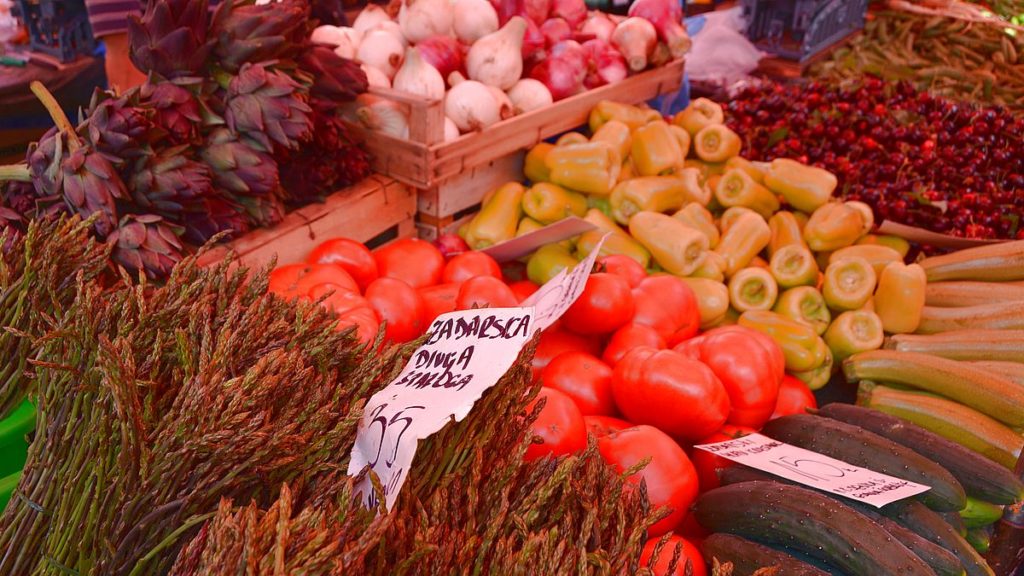
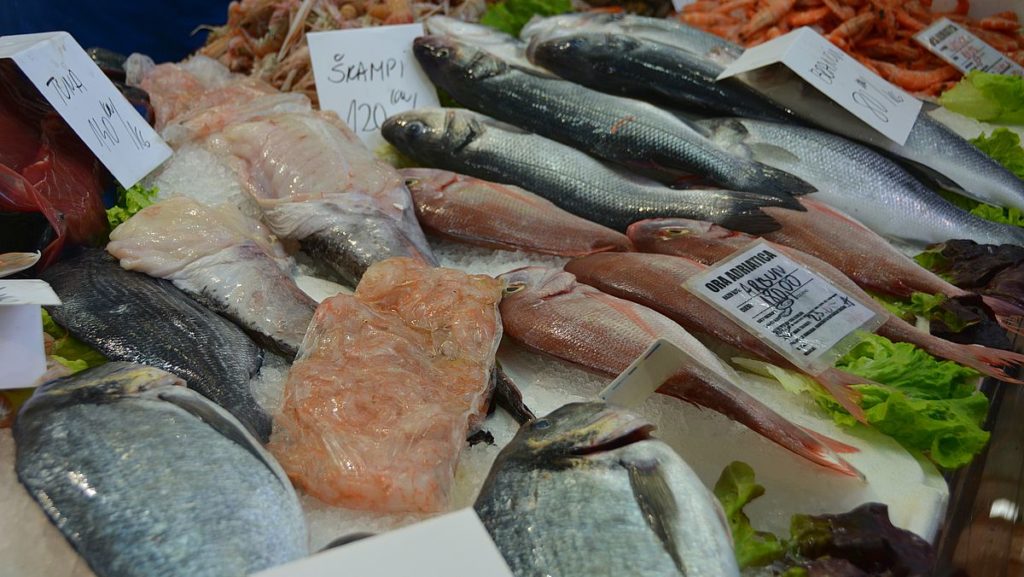

8. Drink coffee on the Tkalčić pedestrianised street
What we liked most in Zagreb was the cosy Tkalčić Street. This is a long and picturesque pedestrianised street where restaurants, cafes and outdoor cafes are densely packed. As soon as you enter this street, you get a holiday feeling and it doesn't feel like you're in a capital city at all.
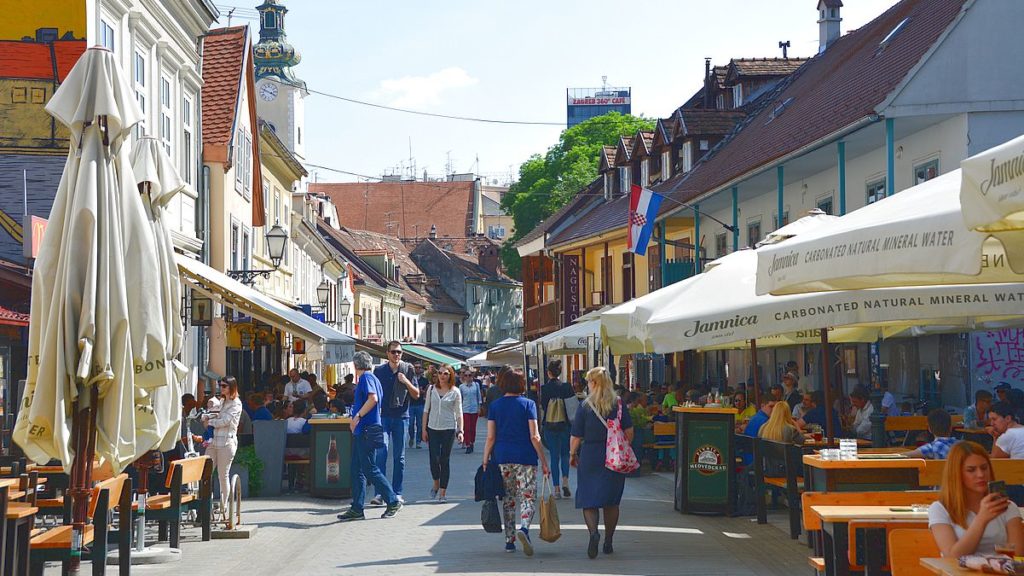
9. try Croatian food
If you want to try traditional Croatian food you can head to the Vinodol restaurant, located at Teslina 10 in the centre of Zagreb. Sitting under high brick arches, there are plenty of traditional Croatian dishes to choose from.
We tested Zagreb-štrukli (a baked dish made from dough and cream cheese) as a starter and veal cooked under peka (slow cooking in a pot by a fireplace) as a main course. It was really good and we were very, very full! Read more about living and eating in Zagreb.

10. Croatian shopping
In addition to the market in Dolaca every Sunday there is a market on Britanski trg. Clothing and fashion can be found on the Ilica shopping street. If you prefer to go to a shopping centre, there are several to choose from, such as West Gate, Avenue Mall, Arena Centar and City Center One..

11. Visit the best Christmas market in Europe
Are you planning to visit Zagreb, Croatia at Christmas time? Zagreb has won the battle for Europe's best Christmas market for several years in a row, which is perhaps not surprising given that the city goes 'all in' for Christmas. Every tree is decorated with lights, trams are festooned with garlands, and bike taxi drivers are dressed as elves.
Christmas markets are organised both in the Old Town and Park Zrinjevac, where you will find countless stalls selling Christmas decorations, handicrafts, hot red and white wine and "fritule", a type of deep-fried doughnut that is immensely popular.



12. Take an excursion in Croatia
Have time to spare and want to see more of Croatia? Here are suggestions for interesting sights and destinations within a reasonable distance.
- Plitvice National Park - About two hours by car from Zagreb is the stunning Plitvice National Park. The park is a UNESCO World Heritage Site and offers magical nature, impressive waterfalls and wonderful boat trips. Read more about Plitvice Lakes.
- Opatija - If you want to get out to the coast, take a trip to Opatija, which is two hours (motorway) from Zagreb. Opatija has a nice promenade and stands out from many other resorts in Croatia with its charming turn-of-the-century architecture. Read more about Opatija.
- More destinations in Croatia - If you are travelling around the country, there are many more destinations to explore such as Porec and Rovinj in Istria, Trogir, Split, Omis, Dubrovnik and the islands of Brac and Hvar. Read more: Travelling to Croatia - your guide to Croatia's best destinations.

More sights and things to do in Zagreb
In addition to everything we have seen and do in Zagreb, Croatia, we can tell you some of the things we didn't actually get to do, but would love to see and experience on our next visit:
- Zagreb 360, or Zagreb Eye, offers dizzying panoramic views from the 16th floor of the Zagreb skyscraper. See Zagreb on Ilica 1A.
- Grič tunnel is a 350 metre long tunnel that connects Mesnička and Radićeva streets and runs under Gradec (also known as Grič). It hosts various cultural events and art exhibitions.
- The stone gate is a listed city gate in Zagreb, which includes the shrine of Our Lady of the Stone Gate, the patron saint of Zagreb. On 31 May 1731, a fire broke out in Gradec and the painting depicting the Virgin Mary and the Child Jesus miraculously survived without damage. You can find it at Kamenita ul.
- Medvednica is a mountain outside Zagreb, and if you want to, you can visit the top of Sljeme. There are also great hiking trails in the area.

Things you didn't know about Zagreb?
Zagreb's dramatic history
In the upper old town, a single wooden house remains, a reminder of a bygone era. In the 13th century, Genghis Khan and his son Ögedei (Ogotai) Khan ruled Asia and Europe. General Tsubotai, who led all of Genghis Khan's troops, is considered the greatest military commander in history.
He led 20 campaigns, conquered 32 countries and won 65 battles.. There is no evidence that he ever lost. He always placed people in each city one to several years before he would strike to get the best information, on how to win with small losses.

In 1241 it was Hungary's turn and King Béla IV who eventually had to flee after his defeat, made his escape to Zagreb. General Tsubotai then sent an army after him, and when they arrived they levelled Zagreb and burned the whole city.
King Béla IV had fled again but left behind a burnt-out city. They managed to save a single wooden house, which is still visible today in the old town centre. After this, Croatians started building houses in stone, and only the roofs were built in wood.

Are Europe's clearest waters in Croatia?
The water in Croatia is crystal clear. Every time we come down to the beach we look and point....
What to eat in Croatia? - 20 Croatian specialities
What to eat in Croatia? We list 20 Croatian specialities and tell you about our experiences with...
Things to do in Zadar - 12 sights and experiences
Updated 2023 - What to see and do in Zadar, Croatia? Zadar is a...
Good campsite at Pula in Istria
Now we have found a good campsite near Pula on Istria, after travelling...
Boat trip in the Croatian archipelago - renting your own boat
Today we can tell you about a wonderful boat trip in the Croatian archipelago. The Croatian archipelago is magically beautiful,...
Holidays in Dalmatia - 10 favourites on the Croatian coast
In partnership with Lottoland Dreaming of a holiday in Dalmatia? Croatia's coastline offers medieval towns,...
By motorhome in Opatija, Croatia
We have now spent a few days in Opatija, Croatia. This is a charming little town with...
Stari Grad on the island of Hvar - Croatia's oldest town
Croatia's oldest town Stari Grad is located on the island of Hvar, in a small bay on the north-west...
Krka National Park in Croatia - 8 musts and facts
Updated in 2023 - Krka National Park in Croatia is a stunning national park with impressive waterfalls,...
Camping in Dubrovnik - luxury Solitudo camping
Looking for a campsite in Dubrovnik? Camping Solitido is located in the south of Croatia, 6 kilometres outside...
Living and eating in Zagreb - restaurant tips
Eating in Zagreb? You can do it in the hustle and bustle of the Tkalciceva promenade in the city centre. Discover all...
The world's smallest city - Hum in Croatia
Hum in Croatia is the smallest city in the world. We went to the small mountain village located on...
Things to do in Croatia - 30 sights and experiences
What to see and do in Croatia? This lovely country, which has a long coastline...
Experience Croatia by car
If you want to experience Croatia, the best way to do so is by car. If you only fly...
Pakoštane in Croatia - and Camping Kozarica
Pakoštane in Croatia is a small town nicely situated next to the Adriatic Sea. We made a...
Radisson Blu Resort & Spa in Split - spa weekend in Croatia
The Radisson Blu Resort & Spa in Split is located by the sea in Split and is ideal for...
Labin in Croatia - on a motorhome trip around Istria
Labin in Croatia is a charming town on the eastern side of Istria. We started with an early...
Plitvice Lakes - experience the Plitvice National Park
Updated 2023 - Plitvice Lakes in Croatia is a national park and natural area with dramatic waterfalls, beautiful...
A huge campsite in Pula: camping Brioni
Right now we are standing, almost alone, on a huge campsite in Pula. Most campsites in...
Holidays on Brac in Croatia - tips for the island of Brac
Updated 2023 - Looking for a holiday on Brac in Croatia? The island of Brac is a...
Hiring a motorhome in Croatia - our experience of a 'bumpy ride'
We have just returned from a week-long trip around Istria in Croatia, where we...
Camping on Brac in Croatia - cosy at Kito
We have found a nice campsite on Brac in Croatia. On this island there are...
Paklenica National Park in Croatia
Paklenica National Park in Croatia is a dramatic park in a large canyon, listed as a UNESCO World Heritage Site...
Restaurants in Split - our top restaurant tips
Restaurants in Split we can tell you about today! During our last visit to Split, we had time...
Fažana - a gem on the west coast of Istria
Located on the west coast of Istria, the small town of Fažana in Croatia is a little gem. Here...
Things to do in Dubrovnik - 16 sights and experiences
What to do in Dubrovnik, Croatia? Dubrovnik is a fascinating city, full of interesting...
The village of Bol on the island of Brac - in the Croatian archipelago
Bol is located on the island of Brac, which is the third largest island in the Croatian archipelago. Brac is surrounded...
Makarska Riviera in Croatia - a holiday paradise
Updated 2023 - The Makarska Riviera in Croatia stretches just over 53 kilometres, from Brela in the north...
Omiš in Croatia - City of Pirates
The pirate town of Omiš in Croatia is located on the Adriatic Sea in Dalmatia, just southeast of Split. In the 13th...
Sinj in Croatia - among knights and Unesco heritage sites
Sinj is a small town in Dalmatia, inland Croatia. By making just a short...

Facts about Zagreb
- Language? Croatian (many also speak English)
- Residents? 790 000 in Zagreb
- Currency? Kuna (HRK)
- Price point? Cheaper than Sweden
- Time difference? None
- Emergency number? 112
- El? Like Sweden
- Water? It may be advisable to opt for bottled water
- Religion? Christianity (mostly Catholicism)
- Warmest month: August (about 30 degrees)
- Coldest month: January (about 5 degrees)
- City Day: 31 May
Travelling to Zagreb
- Flight: Croatia Airlines flies directly from Stockholm to Zagreb in Croatia, a flight of just under 2.5 hours. Other airlines fly to Zagreb from various destinations in Sweden, but usually with a stopover.
- Airport: Zagreb International Airport is called Pleso and is located 10 kilometres southwest of the city. From here you can take a bus or taxi.
- Car: It takes about 23 hours to drive from Stockholm to Zagreb, counting pure driving time.
Restaurants in Zagreb
- Restaurant Agava at 39 Tkalčić Street, offers delicious European food and a view of the crowds on the street outside.
- Restaurant Vinodol, on Teslina 10, is great if you're looking for authentic Croatian food and a cosy atmosphere.
Accommodation in Zagreb
- Hotel: There is a wide range of accommodation in Zagreb. For example, Hotel Dubrovnik is a great place to stay in the centre of town. The hotel has four stars and you can get rooms for reasonable prices per night.
- Camping: If you're coming by campervan, there's a super-modern campsite just outside of town called Camp Zagreb.



























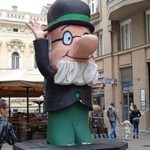














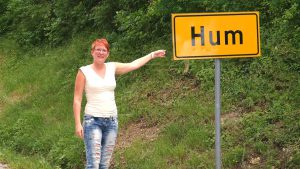

















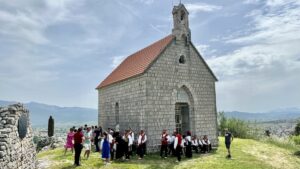
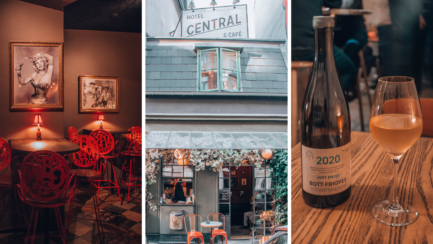

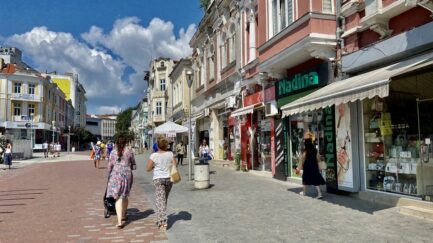






Mr Steve says:
Welcome home! Following your blog is a perfect introduction for future travellers.
You seem to have had wonderful days in Croatia. You convey the environments very well with your texts and pictures. Manually lit street lamps sound charming. So not everything is computerised. I love food markets. And tuna. So even Zagreb can be seen as a "little gem".
26 May 2016 - 7:58
Ama de casa says:
Seems like a very cosy city! 🙂
We have sung a snapsong in the form of a rebus, which includes a line that should be "... and here we also have a lamplighter...".
I thought they didn't exist anymore, but now I know better 😀.
However, the snap song no longer exists - the booklet disappeared in the move here. I'm sorry to say.
26 May 2016 - 8:38
Berit says:
Nice to experience through you that Zagreb is also a charming Croatian city!
26 May 2016 - 8:50
Ann-Sofie says:
What a little gem! I always thought that Zagreb was a big and messy city...
26 May 2016 - 8:51
FANTASYDINING-A blog about themed restaurants and travel says:
I am always curious about cities even when they are small. It will be very fun to visit Belgrade later this summer, I would also like to visit Zagreb.
26 May 2016 - 9:32
Goatfish says:
You have made a great report from Zagreb 😀 the city really attracts me! Thanks for the tour!
The square reminds me of the rush of the Grand Place in Brussels, I liked it there. I want to have events around me.
Lantern lighter, how cosy. I think I've heard of it before somewhere else. Could it be Dublin?
Fish dishes, yum.
Luckily, I have a trip in exactly one week, to look forward to 😉.
Sunny hugs, Gerd
26 May 2016 - 9:38
Anonymous says:
Wow! What fun to see pictures from Zagreb! I have not thought at all about what it would look like there, but when I think about it, I have probably had some inner imagination that I had to completely reject now. Thank you very much! Nice!
26 May 2016 - 9:48
Vackralillavardag says:
Looks nice! We just drove quickly through a year without stopping. Did not think it would be so nice. Will make sure to stop next time!
26 May 2016 - 9:49
Anette says:
And that put Zagreb at the top of my list this year!
26 May 2016 - 10:23
Anja says:
I guess I became "Anonymous" again.... 🙂
26 May 2016 - 10:27
Ditte says:
Zagreb seems to be a very nice city with the old environments preserved and such things are liked here.
It's the perfect time to visit Zagreb when it's not yet so hot and strolling around is pleasant.
Extra plus of course that you had a good guide with you.
What is the price situation on the food front in good restaurants? Just interesting to know. Because the food is almost half the journey.
Of course, I had also stopped by the market,
It seemed like a very good idea to fly to Zagerb and rent the motorhome there.
Thank you for a very personal and good report also from Zagreb.
26 May 2016 - 11:38
Marina says:
Isn't it wonderful with all these markets, think that you never get tired of going and looking at all the different delicacies you can find in different places. How cool with lantern lighter, it sounds like a fairly exhausting work. maybe something to invest in the next life 😉.
26 May 2016 - 13:26
Lennart says:
Food markets are fun to check out!
Many different scents including
26 May 2016 - 13:38
admin says:
Steve, thank you! And yes, we actually experienced Zagreb as a small "pearl" despite being a capital city 😉.
Ama de casa, haha what fun...! The schnapps song is gone but the lantern man is still there 😉.
Berit, we were a bit surprised by how much we liked Zagreb! 🙂
Ann-Sofie, neither big nor messy 😉.
FantasyDining, how nice that you are going to Belgrade! We are also curious about that city! 🙂
Geddfish, the guide told me that there were gas lanterns in some other city (maybe Dublin?) but that they were lit automatically... But I'm not sure? It was charming anyway 😉
Anonymous (Anja), I probably had another show before we got there, but we liked the city very much!
Ditte, prices in restaurants are a bit lower than in Sweden, but not much lower. Croatia is not a super cheap country anymore.
Marina, haha, he did have over 200 lanterns that he has to light every day, but he did have a moped or scooter to help him 😉.
Lennart, right? 🙂
26 May 2016 - 13:50
BP says:
Zagreb is very reminiscent of Gdansk and Riga, I think. A cosy city simply. Food markets are just sooooo much fun to visit. You always find something that you didn't know existed.
Also, I think it's really, really charming to manually switch on the streetlights. As Steve says - not everything is computerised... yet.
26 May 2016 - 16:13
Anette says:
Understand that I have many European cities to explore.
Maybe it will be Zagreb in a while, seems like a cosy city.
26 May 2016 - 16:49
Matts Torebring says:
We usually avoid the big cities. Always the same parking problems. If we leave the car, we are afraid of burglary. There is a campsite within easy reach and the city centre is easily accessible by bicycle.
26 May 2016 - 20:19
Snows says:
Zagreb seems to be a nice city that is well worth a visit. It's nice that old environments remain because it gives the city personality!
26 May 2016 - 21:21
admin says:
BP, the Art Noveau houses are definitely reminiscent of Riga! And of course the street lamps are a bit charming!
Anette, yes there are many interesting cities in Europe! We are a little extra curious about the cities in the eastern part of Europe, it feels like there is a lot to discover there 😉.
Matts, we think the same way. We visit larger cities with the campervan from time to time, but then it has to be a campsite or supervised parking space and then a bus or similar to get into town ...
Znogge, really agree, it is often the older buildings that give soul to a city!
26 May 2016 - 23:30
Steel city anna says:
Such a beautiful city. Really like the old houses. Fun with the lantern job too.
28 May 2016 - 3:07
Deciree says:
You seem to have had a wonderful time on this trip too...:) Thanks for the info about the city. We are going there:)
28 May 2016 - 8:13
admin says:
Steel city Anna, I also like cities with old houses!
Deciree, I think so! Zagreb is a very nice capital city! 🙂
29 May 2016 - 6:35
Linda, resamedvetet.se says:
Great to find this post now that I am here. Thanks for the tips!
09 August 2017 - 14:34